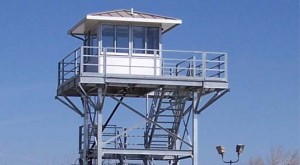Open Partially Enclosed Carports Garages Barns Metal Buildings
Open Partially Enclosed Carports, At J.C.s Metal Building Sales Inc., we specialize in selling durable storage buildings of all shapes and sizes.
Open Partially Enclosed Carports Garages Barns Metal Buildings
For example, in addition to our wide selection of Open Partially Enclosed Carports, we also sell warehouses, garages, mini storage units, and portable hunting blinds.
And, with our ability to design custom products for our clients, there is no need that we can not fill.
On top of the excellent selection of products J.C.s Metal Building Sales offer, we pride ourselves on the high standards of quality and customer service that have helped build our reputation.
Open Partially Enclosed Carports
For example, when you buy a steel storage building from J.C.s Metal Building Sales, Inc.,
You can always rest assured that it is engineered and certified to meet your state codes.
And has been reinforced to withstand high winds, large amounts of weight of Snow, and Ice in Harsh Weather Conditions.
And the commercial finish that we place on the exterior means that the building requires low maintenance to keep the structure looking nice for years.
If you order a product from our J.C.s Metal Building Sales, a few other perks that accompany it are that we only sell engineered certified steel structures plus provide free shipping and installation.
With these services included in the deal you won’t have to worry about transportation issues or construction.
After all, this is our specialty and we are more than happy to provide these services for our valued customers.
Remember, we cover thousands of square feet every year with metal carports, garages, horse barns and other outdoor covers.
J.C.s Metal Building Sales, buildings will last for years, so we know you need a company who will be there for you.
Who will support the product you purchased and who will stand behind it.
That’s what sets J.C.s Metal Building Sales, Inc. apart from the rest and makes us the best provider in the industry.
For more information on our products and service, contact us directly 1-386-277-2851 or look through the other pages on our site.
A carport is a covered structure used to offer limited protection to vehicles, primarily cars, from the elements. The structure can either be free standing or attached to a wall. Unlike most structures a carport does not have four walls, and usually has one or two. Carports offer less protection than garages but allow for more ventilation.
Quoting from the Carport Integrity Policy for the Arizona State Historic Preservation Office:
As early as 1909, carports were used by the Prairie School architect Walter Burley Griffin in his design for the Sloan House in Elmhurst, Illinois (Gebhard, 1991: 110). By 1913, carports were also being employed by other Prairie School architects such as the Minneapolis firm of Purcell, Feick & Elmslie in their design for a residence at Lockwood Lake, Wisconsin. In this instance, the carport was termed an “Auto Space” (Gebhard, 1991: 110). The late architectural historian David Gebhard suggested that the term “carport” originated from the feature’s use in 1930s Streamline Moderne residences (Gebhard, 1991: 107). This term, which entered popular jargon in 1939, stemmed from the visual connection between these streamlined residences and nautical imagery. In the 1930s through the 1950s, carports were also being used by Frank Lloyd Wright in his Usonian Houses; an idea that he probably got from Griffin, a former associate.
Modern carports are typically metal (steel, tin, or aluminum) and are modular in style in the USA, while remaining flat-roofed permanent structures in much of the rest of the world. The carport is considered to be an economical method of protecting cars from the weather and sun damage, and tens of thousands are installed in the USA alone each year.
The term carport was coined by renowned architect Frank Lloyd Wright, when he began using the carport for the first of his “Usonian” homes; the house of Herbert Jacobs, built in Madison, Wisconsin, in 1936.
In describing the carport, he said to Mr. Jacobs, “A car is not a horse, and it doesn’t need a barn.” He then added, “Cars are built well enough now so that they do not require elaborate shelter.” Looking back at life in 1936, it is easy to imagine automobiles prior to this time were not completely water tight; the era of robotic-assembly, advanced materials, and perfect closure lines was still 50 years in the future.
The carport was therefore a cheap and effective device for the protection of a car. Mr. Jacobs added: “Our cheap second-hand car had stood out all winter at the curb, often in weather far below zero (Fahrenheit). A carport was a downright luxury for it.”



